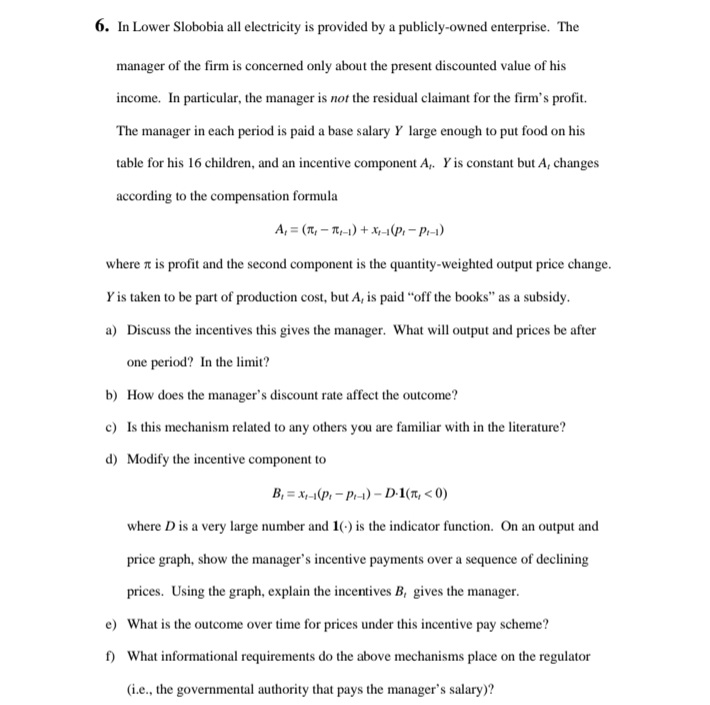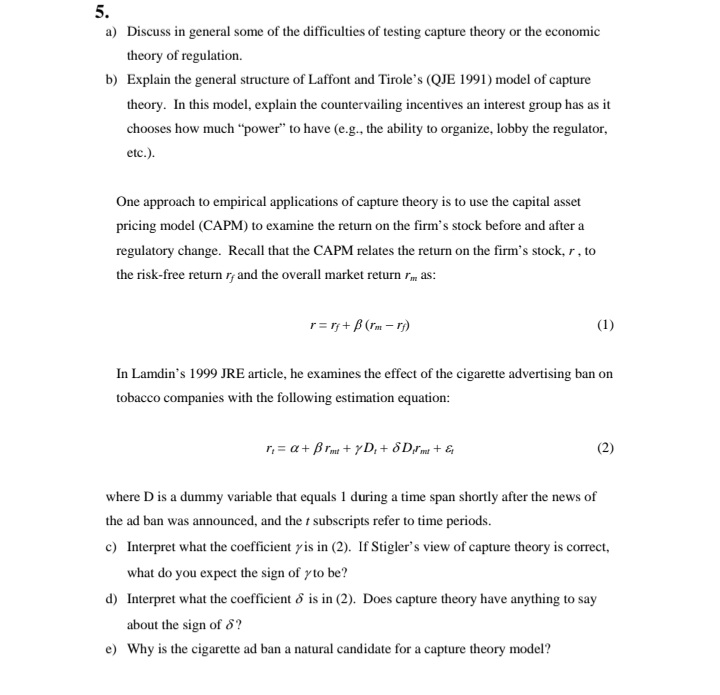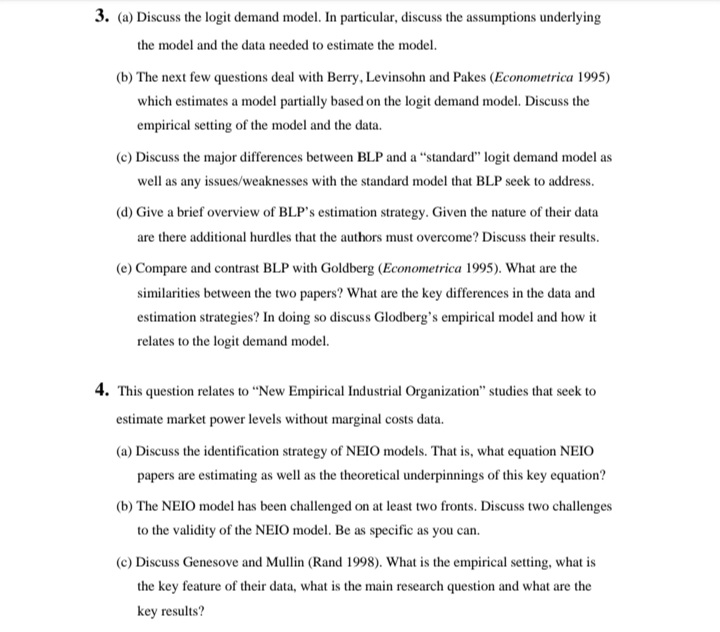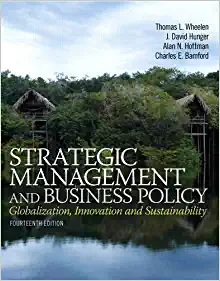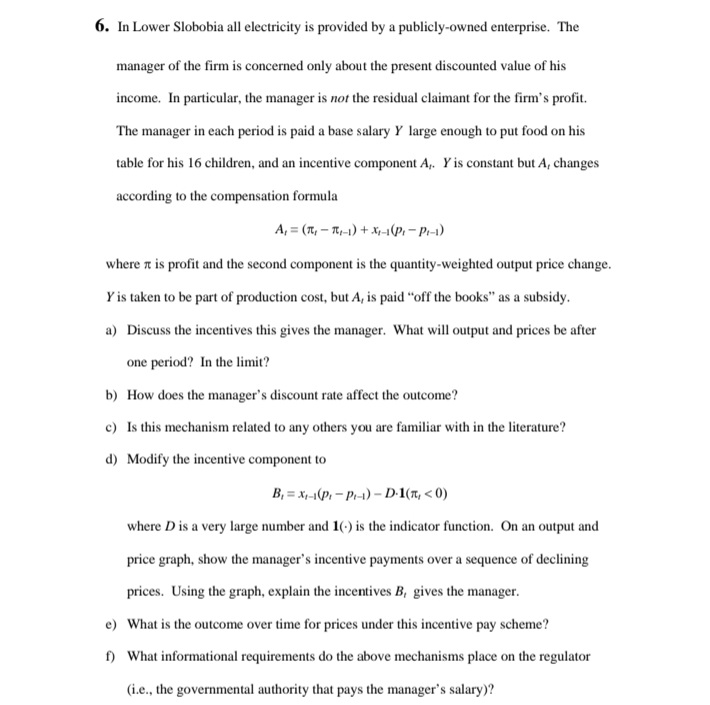
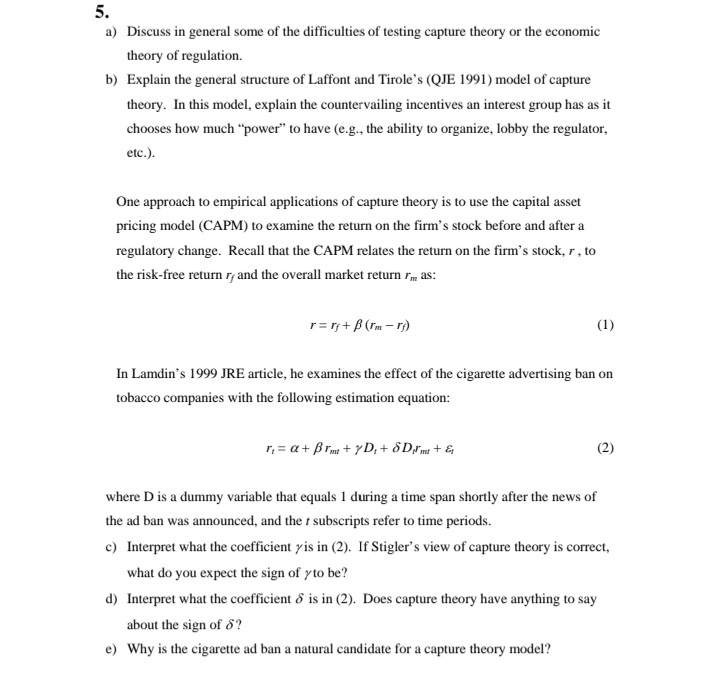
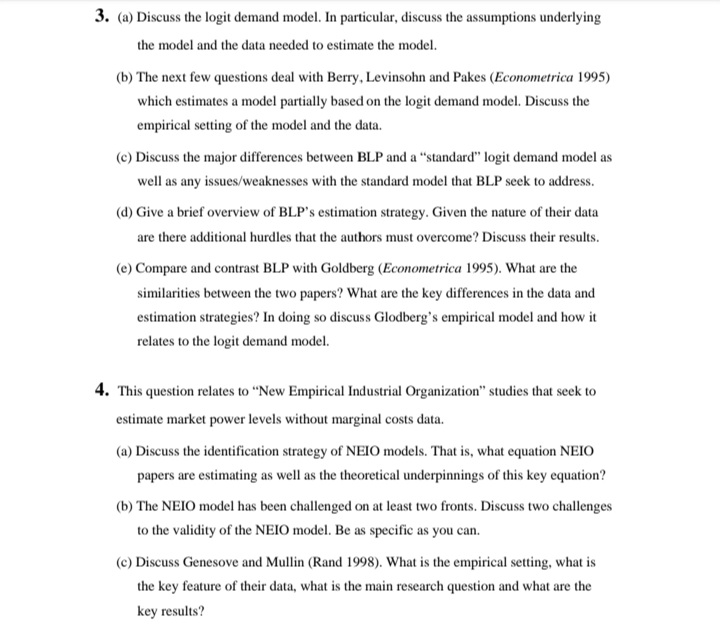
please help
5. In Lower Slohohia all electricity is provided by a publicly-owned enterprise. The manager of the rm is concerned only about the present discounted value of his income. In particular. the manager is not the residual claimant for the firm's profit. The manager in each period is paid a base salary 1" large enough to put food on his table for his lli children. and an incentive component A... Y is constant but A, changes according to the compensation formula as =t1n - 11an1+ stats: wool where it is prot and the second component is the quantity-weighted output price change. Fis talten to be part of production cost. but sh is paid \"off the books" as a subsidy. a] Discuss the incentives tltis gives the manager. 1|What will output and prices be after one period? in the limit? Is] How does the manager's discount rate affect the outcome? c] Is this mechanism related to any others you are familiar with in the literature? d] Modify the incentive component to 5:: Ir-ILPr ' Fu-tl - D-llr '5 ['1 where D is a very large number and 1H is the indicator function. On an output and price graph. show the manager's incentive payments over a sequence of declining prices. Using the graph. explain the incentives 3. gives the manager. e] What is the outcome over time for prices under this incentive pay scheme? f} 1What informational requirements do the above mechanisms place on the regulator (he... the governmental authority that pays the nunager's salary]? 5. a) Discuss in general some of the difficulties of testing capture theory or the economic theory of regulation. b) Explain the general structure of Laffont and Tirole's (QJE 1991) model of capture theory. In this model, explain the countervailing incentives an interest group has as it chooses how much "power" to have (e.g., the ability to organize, lobby the regulator, etc.). One approach to empirical applications of capture theory is to use the capital asset pricing model (CAPM) to examine the return on the firm's stock before and after a regulatory change. Recall that the CAPM relates the return on the firm's stock, r , to the risk-free return r and the overall market return I'm as: r= r + B (Im - ry) (1) In Lamdin's 1999 JRE article, he examines the effect of the cigarette advertising ban on tobacco companies with the following estimation equation: (2) where D is a dummy variable that equals 1 during a time span shortly after the news of the ad ban was announced, and the / subscripts refer to time periods. c) Interpret what the coefficient yis in (2). If Stigler's view of capture theory is correct, what do you expect the sign of yto be? d) Interpret what the coefficient & is in (2). Does capture theory have anything to say about the sign of 5? e) Why is the cigarette ad ban a natural candidate for a capture theory model?3. (a) Discuss the logit demand model. In particular, discuss the assumptions underlying the model and the data needed to estimate the model. (b) The next few questions deal with Berry, Levinsohn and Pakes (Econometrica 1995) which estimates a model partially based on the logit demand model. Discuss the empirical setting of the model and the data. (c) Discuss the major differences between BLP and a "standard" logit demand model as well as any issues/weaknesses with the standard model that BLP seek to address. (d) Give a brief overview of BLP's estimation strategy. Given the nature of their data are there additional hurdles that the authors must overcome? Discuss their results. (e) Compare and contrast BLP with Goldberg (Econometrica 1995). What are the similarities between the two papers? What are the key differences in the data and estimation strategies? In doing so discuss Glodberg's empirical model and how it relates to the logit demand model. 4. This question relates to "New Empirical Industrial Organization" studies that seek to estimate market power levels without marginal costs data. (a) Discuss the identification strategy of NEIO models. That is, what equation NEIO papers are estimating as well as the theoretical underpinnings of this key equation? (b) The NEIO model has been challenged on at least two fronts. Discuss two challenges to the validity of the NEIO model. Be as specific as you can. (c) Discuss Genesove and Mullin (Rand 1998). What is the empirical setting, what is the key feature of their data, what is the main research question and what are the key results



